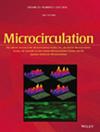Blood Flow Simulation and Uncertainty Quantification in Extensive Microvascular Networks: Application to Brain Cortical Networks
Abstract
Objective
Microvascular blood flow simulations enhance understanding of microcirculatory phenomena at the micrometer scale by capturing heterogeneity in blood flow. However, imaged areas often only partially represent tissue regions, leading to numerous vessels crossing boundaries and strongly influencing simulated blood flows through imposed boundary conditions.
Methods
Two key methodological aspects of blood flow simulations are addressed: selecting appropriate boundary conditions and quantifying the inevitable impact of boundary condition uncertainties on model simulations. An adaptive method for pressure boundary conditions is proposed and rigorously evaluated in extensive brain cortical microvascular networks. The adaptive method is integrated into a Bayesian calibration framework, inferring distributions over thousands of unknown pressure boundary conditions and providing uncertainty estimates for model simulations.
Results
The adaptive method produces simulations consistent with reference data, yielding depth-dependent pressure drop profiles and layer-wise capillary blood flow profiles consistent with previous analysis. These hemodynamic phenomena generalize to biphasic blood flow simulation models incorporating in vivo viscosity formulations. Uncertainty quantification reveals a novel spatially heterogeneous and depth-dependent pattern in blood flow uncertainty.
Conclusions
The adaptive method for pressure boundary conditions will be useful in future applications of both forward and inverse blood flow simulations. Uncertainty quantification complements hemodynamic predictions with associated uncertainties.


 求助内容:
求助内容: 应助结果提醒方式:
应助结果提醒方式:


